NYC’s Forgotten ‘War on Christmas Trees’
Discover how an obscure holiday crackdown affects festive street vendors today!


The FDR Drive is a 9.44-mile freeway-standard parkway that runs along the East River and is one of the most important routes in New York City. It starts north of the Battery Park Underpass, located at South and Broad Streets, and extends all the way uptown to the 125th Street interchange. Thus, it isn’t surprising that such a significant and extensive parkway also has some interesting facts and history.
When the FDR Drive was first conceptualized, it was known as the “East River Drive.” After it was built, the parkway was renamed for former president Franklin Delano Roosevelt following his death in April 1945. Here are the top 10 secrets of the FDR Drive, including red lights on dead-end streets, lost seal statues, and a hidden art installation below your feet!
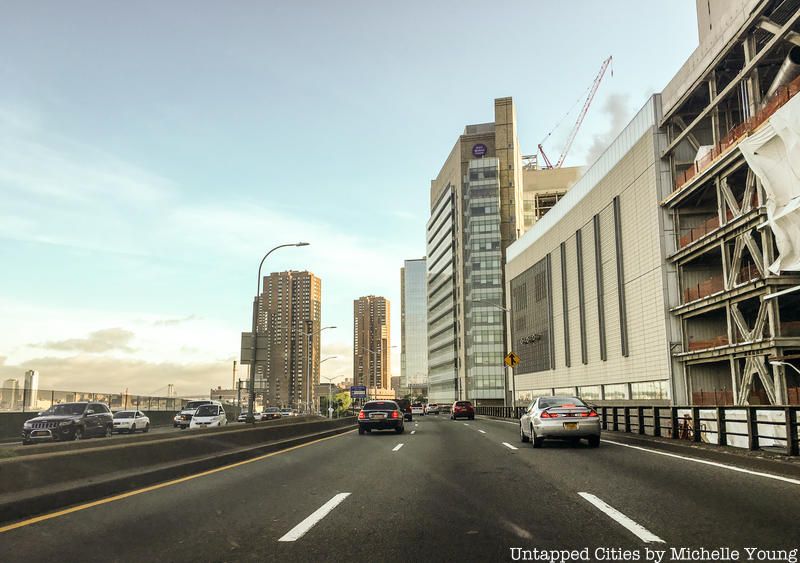
New York City’s architectural history is as colorful and varied as its residents, and some of the ground that we stand or drive on comes from far-off places. During World War II, the city of Bristol, England, underwent an attack by the Luftwaffe, which left a large amount of the city in ruin. Over 85,000 buildings in the city were destroyed. Bristol was a major port for American supply ships during this time.
In the book Rubble: Unearthing the History of Demolition by Jeff Byles, the author writes there were no supplies to load onto the ships after the attack, so the masonry and rubble from the destroyed town were used as ballast. When the ships arrived in New York, the rubble was dumped along the East River from 23rd Street to 34th Street and would later serve as the foundation for portions of the FDR Drive. There is a plaque in Bristol commemorating the shared moment in history between the Americans and the British.
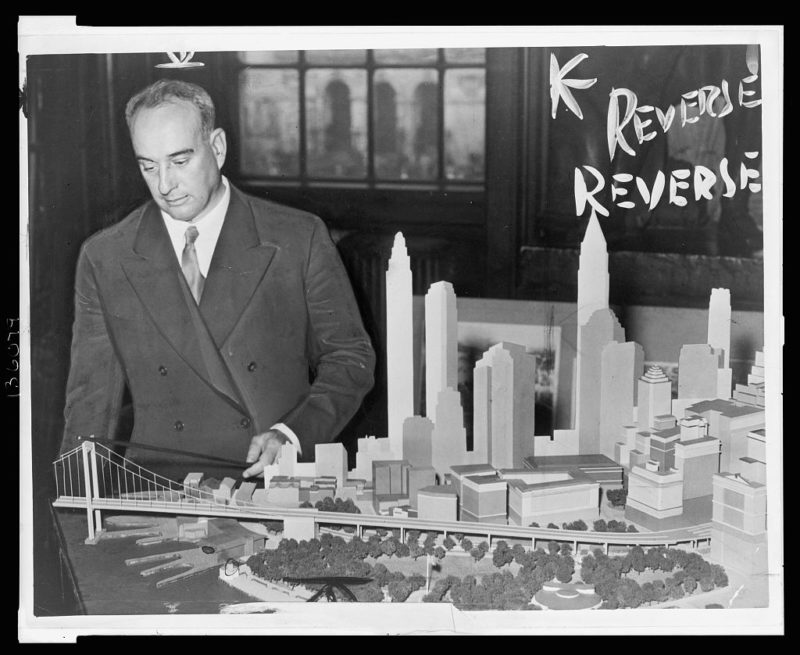
Robert Moses was responsible for a great deal of New York City’s and New York State’s urban development in the first half of the 20th century. Though Moses’ contributions are still in use today, he was a controversial and often polarizing individual during his lifetime. Some of his projects include the Cross-Bronx Expressway, the Henry Hudson Bridge and the Verrazano-Narrows Bridge.
The FDR Drive was another of Moses’ public projects that he began planning in the 1920s. Moses’ vision for the East River Drive, as it was originally known, included six 12-foot wide lanes, long viaducts for grade separation and green spaces between the parkway and the East River. The original construction of the FDR Drive began in 1934 and was finished in 1955. Then, from 1955 to 1966, the parkway underwent reconstruction.
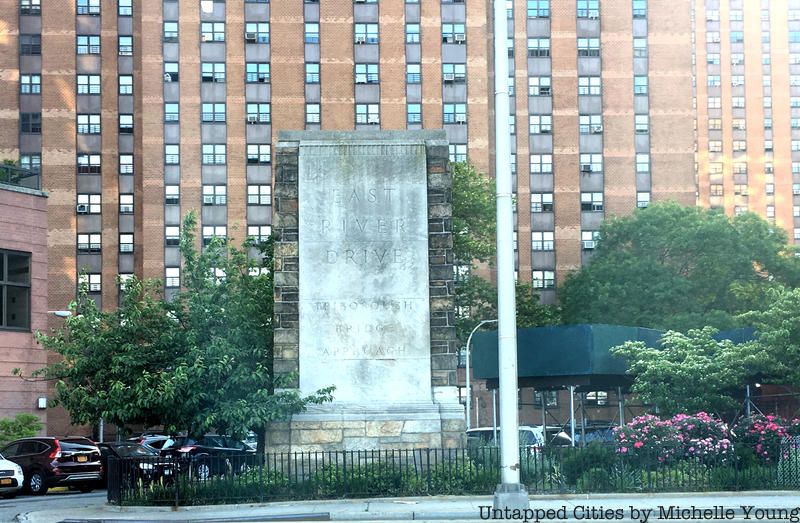
We have previously written about a number of small parks in New York City that measure 0.04 acres or less, including Lafayette Square, Samuel Marx Triangle, and Charlton Plaza. Another one of these pocket-sized parks is on the FDR Drive on the corner of FDR and 93rd Street. The no-name park is listed on New York City Parks Department website with a size of 0.03 acres but has no description. The park’s defining characteristic is an unobtrusive stone marker that reads “East River Drive Triborough Bridge Approach,” an homage to its original name.
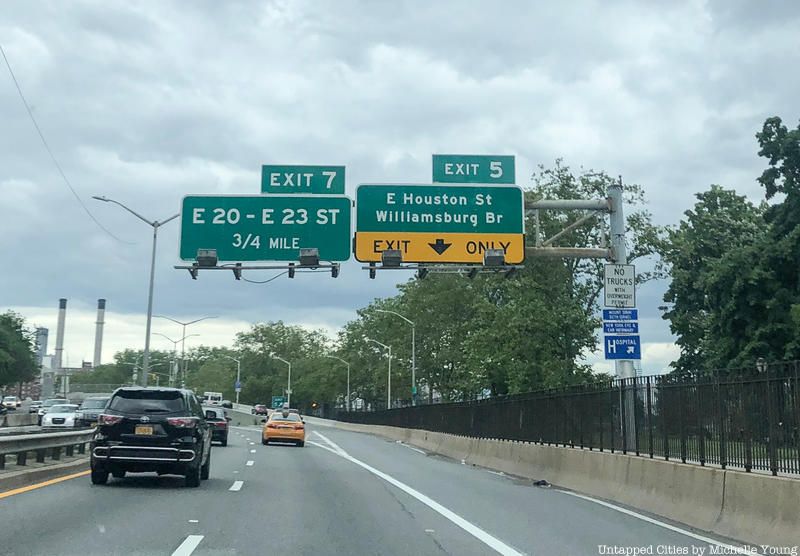
Following September 11, 2001, signs for exit 6 on the FDR Drive bore a “closed” sign. For years, drivers wondered whether the exit would be reopened. The exit was closed “due to security reasons,” but another reason is that the exit is located near a Con Edison substation that controls much of lower Manhattan’s electricity. According to Con Edison, there are no plans to reopen the exit. Signs for the exit were removed in 2016.
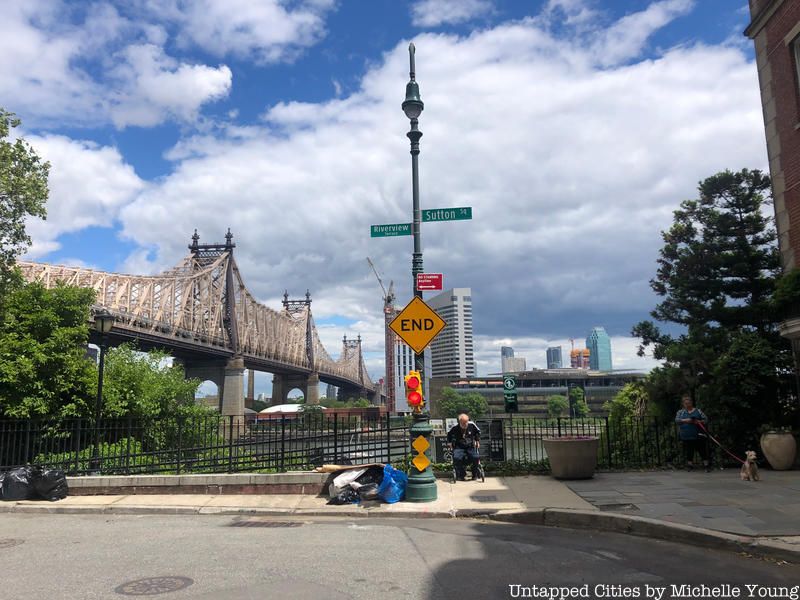
On a dead end along the FDR Drive, one will stumble across something strange: a red light. We previously explored the dead-end red lights that seem odd in places where there is no active traffic. The stop lights supplement dead-end signs and prevent cars from colliding into the end of a road. These types of lights are kept on all day and are strategically placed in streets that end above grade, or are on a cliff or by a riverside like the East River.
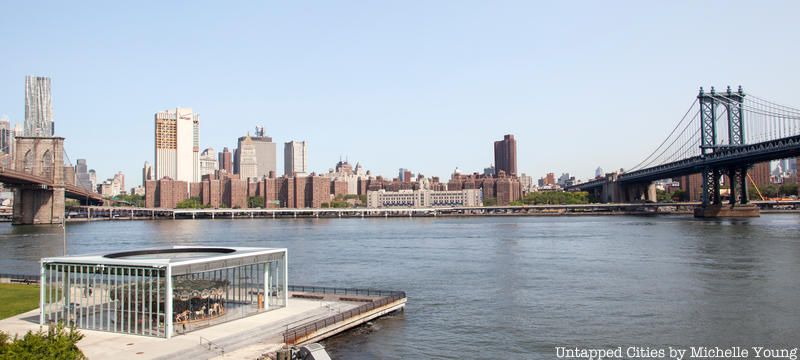
In the 1930s, Robert Moses began planning a public park to be built on the East River waterfront on Manhattan’s Lower East Side in tandem with the FDR Drive. At the time it was built, Moses envisioned a green space for the Lower East Side, which was “sorely in need of a parkland.” The East River Park opened in July of 1939 and was the largest open green space in the Lower East Side at the time. But as the FDR Drive was built, portions of the original park were eliminated, including a section between Montgomery and Jackson Streets.
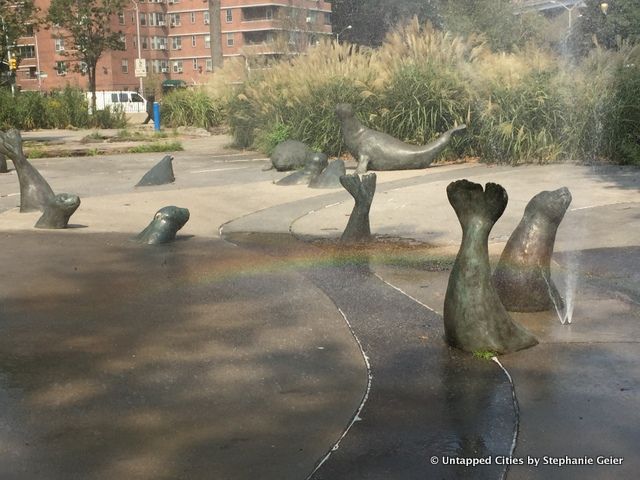
In 2001, East River Park was officially renamed the John V. Lindsay East River Park after New York’s 103rd mayor. In 2021, demolition began in the park to make way for the East Side Coastal Resiliency Project which will construct a storm surge barrier and new park. Sadly with the demolition, the park's 27 seal sculptures were removed. The sculptures were designed by Gerry Augustine Lynas, a New York-based artist who specializes in sculptures made of sand and snow. In 1980, Lynas created a snow sculpture for the athletes’ village during the Winter Olympics in Lake Placid, New York. The East River Park seals were installed in the park in 2001 and doubled as sprinklers in the warmer months. They were removed in 2022.
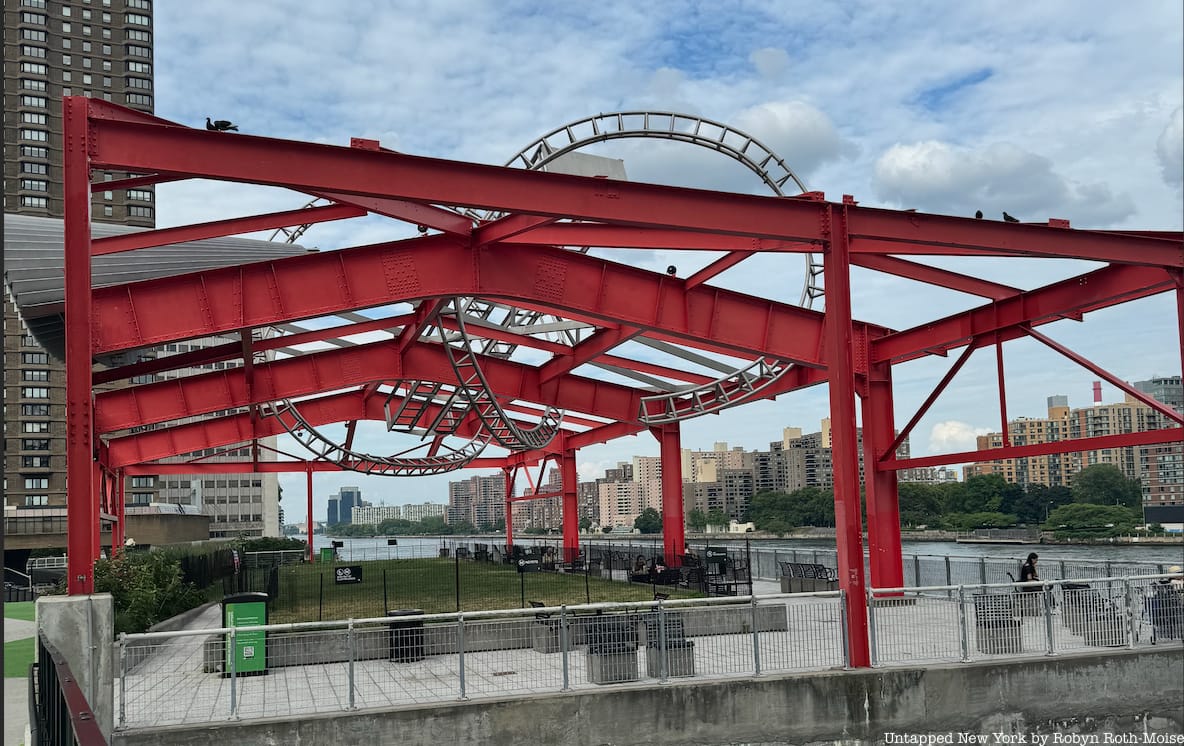
A unique-looking sculpture that resembles a wild rollercoaster ride stands under the Ed Koch Queensboro Bridge and atop a defunct waste transfer station at 60th Street. The metal behemoth is a 1994 art installation called East River Roundabout by artist Alice Aycock. The original purpose of Aycock’s project was to transform the abandoned steel frame of a former waste transfer station into a public plaza. The monumental sculpture's twisting form was inspired by the movements of Fred Astaire's dancing and the energy of the city. Formerly abandoned, the plaza below the scuplture was restored in 2017 as part of a renovation of Andrew Haswell Green Park and the larger East Midtown Greenway Project.
According to stories from the The Daily Mail and the New York Daily News, former mayor Rudy Giuliani helped to save a car crash victim on the FDR Drive. In October 2015, Giuliani was traveling on the FDR Drive from JFK Airport when he saw an SUV overturned on the parkway. According to The Daily Mail, the former mayor stopped on the side of the road to call 911 and directed traffic on the FDR Drive while waiting for the ambulance to arrive.
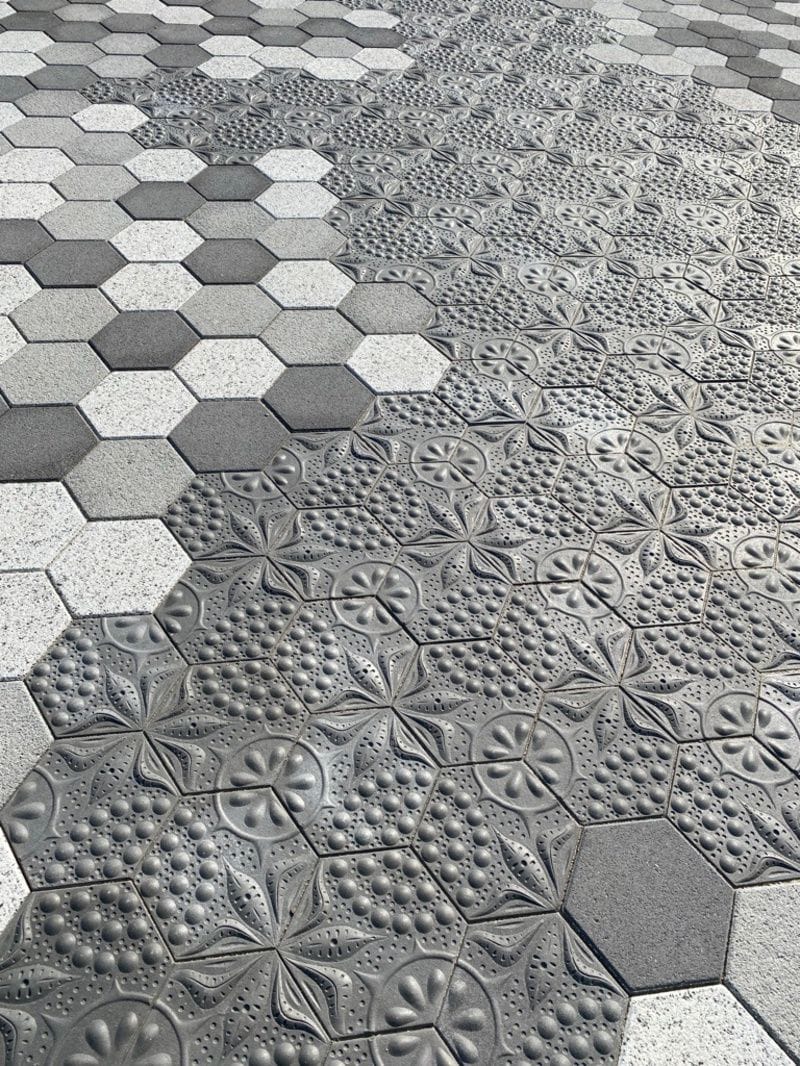
As you walk the public esplanade from East 53rd Street to East 60th Street an enjoy riverfront views, be sure to look down every once in awhile. Some of the pavers below your feet are a work of art by Stacy Levy called Diatom Pavers. Each paver is embossed with images of diatoms, single-celled microscopic algae that live in the East River. Untapped New York Members got to see it on an architect-led tour of the recently opened park!
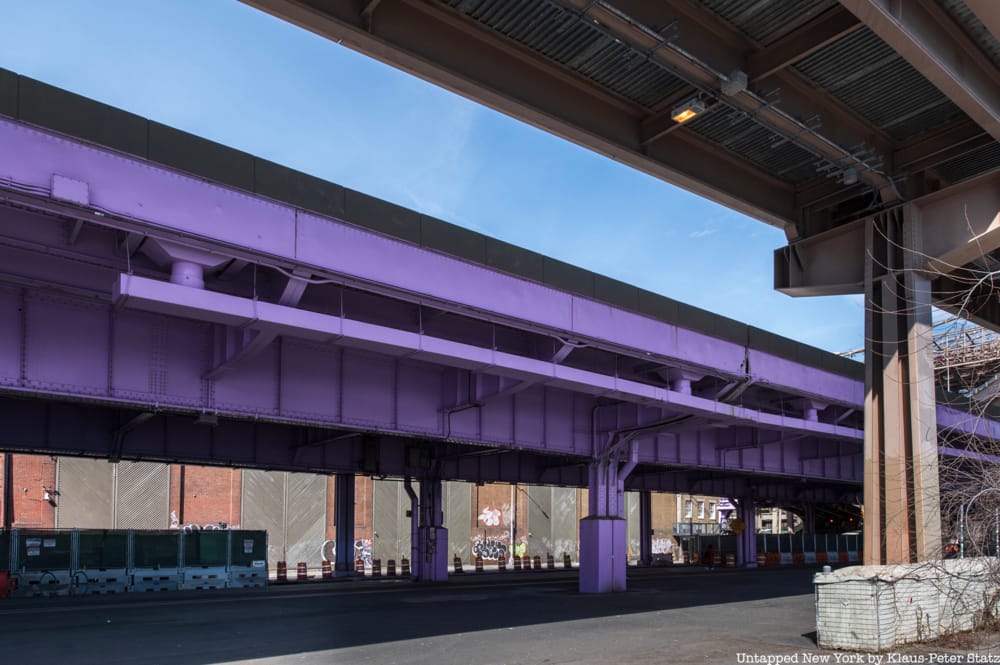
On Untapped New York Podcast, we dispel all of the rumors that have floated around this unusual paint color choice. There weren't tons of purple paint cans just lying around, and it wasn't inspired by the color of the Public Designer Commissioner's tie. Gregg Pasquarelli, founding partner at ShoP Architects and Cathy Jones, project director at SHoP, who designed the Master Plan for the East River Waterfront told Untapped New York that a lot of thought went into the color choice, called "Almost Purple." SHoP chose the color because it offered the most ideal glow on passersby and create a sense of safety without using large lighting infrastructure.
Hear the full story on the podcast!
Next, check out 10 Secrets of the Ed Koch Queensboro Bridge
Subscribe to our newsletter